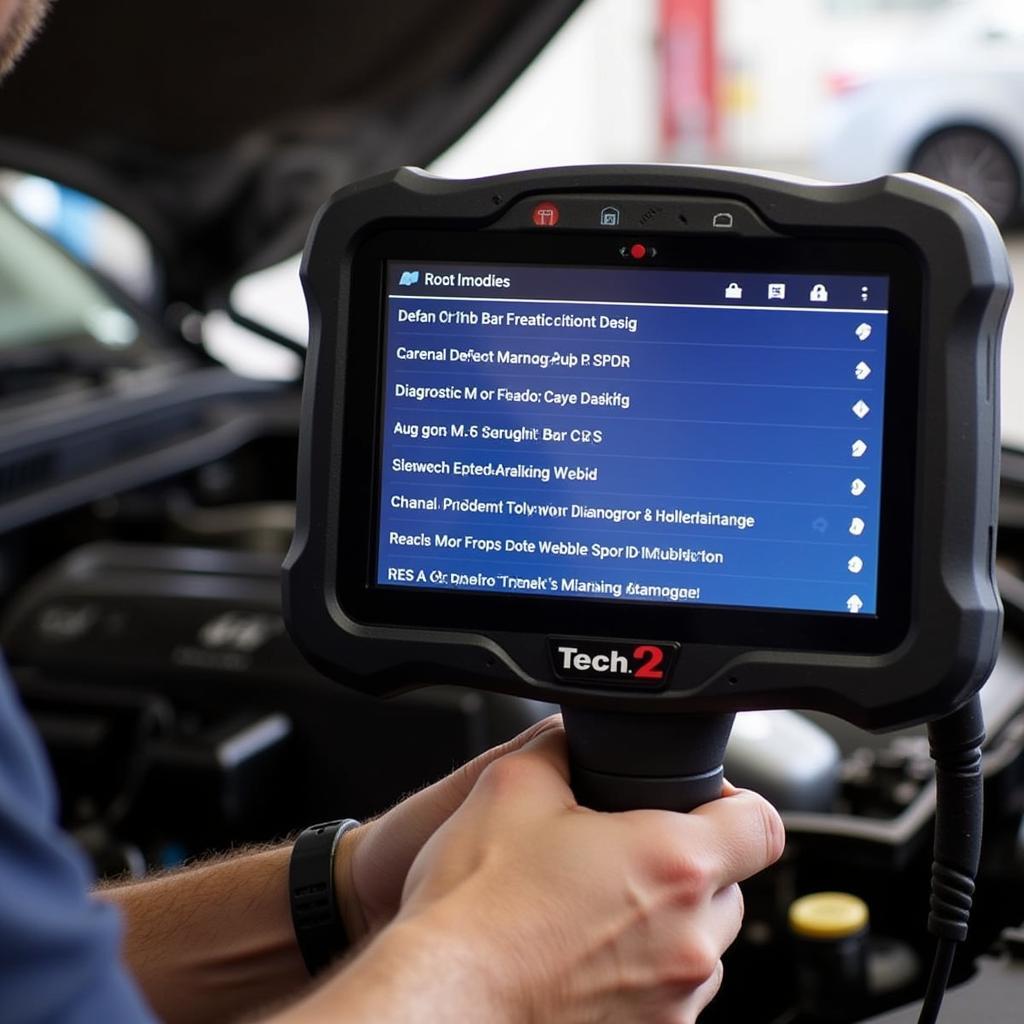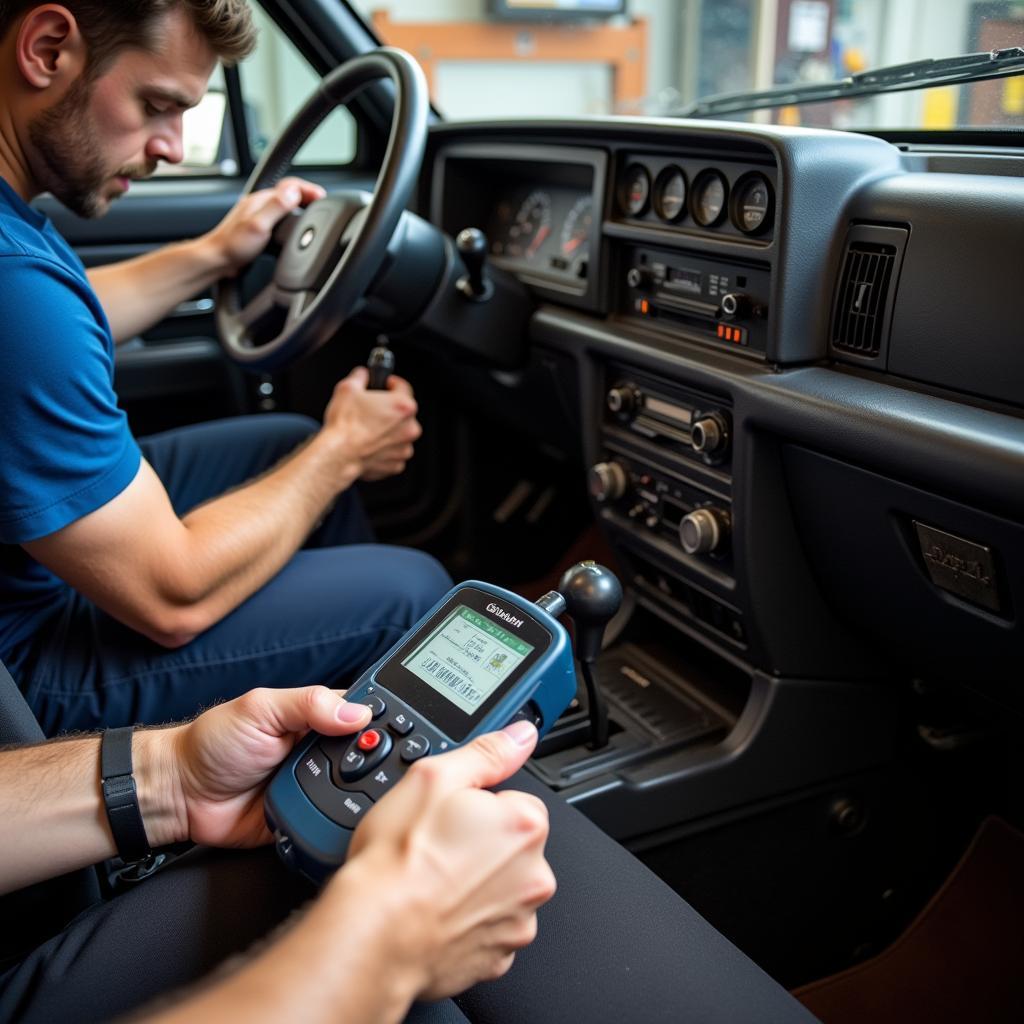Nội dung bài viết
- Essential Linux Command Line Tools for Automotive Diagnostics
- Using top to Monitor System Resources
- Investigating Disk Usage with df and du
- Analyzing System Logs with journalctl and dmesg
- Advanced Diagnostic Techniques with Linux Command Line Tools
- Network Analysis with ping, traceroute, and netstat
- Hardware Diagnostics with lspci, lsusb, and dmidecode
- Troubleshooting Linux Command Line System Health Diagnostic Tools
- Conclusion
Leveraging Linux Command Line System Health Diagnostic Tools is crucial for maintaining optimal performance and troubleshooting issues on Linux-based automotive systems. These powerful tools provide deep insights into system resources, processes, and hardware components, enabling efficient diagnosis and resolution of problems.
Understanding the command line is the key to unlocking a treasure trove of system information. By mastering these tools, you gain a significant advantage in diagnosing and resolving automotive system issues effectively. does every computer have a network diagnostic tool offers some further insight into diagnostic tools in general.
Essential Linux Command Line Tools for Automotive Diagnostics
Several powerful command-line tools are available for diagnosing system health in Linux-based automotive environments.
Using top to Monitor System Resources
The top command provides a dynamic real-time view of running processes, CPU usage, memory consumption, and other vital system metrics. This allows you to quickly identify resource-intensive processes that might be impacting performance.
- Press
Shift + Mto sort processes by memory usage. - Press
Shift + Pto sort processes by CPU usage. - Press
qto exit thetoputility.
Investigating Disk Usage with df and du
The df command displays disk space usage for all mounted file systems, enabling quick identification of full or nearly full partitions that may be causing system instability. du (disk usage) displays disk usage statistics for files and directories. This is particularly helpful for pinpointing large files or directories consuming excessive space.
- Use
df -hfor human-readable output. - Use
du -sh *to display the sizes of all files and directories in the current location in a human-readable format.
Analyzing System Logs with journalctl and dmesg
The journalctl command provides access to the systemd journal, a centralized log for system events, including boot processes, service status, and kernel messages. dmesg displays kernel ring buffer messages, providing valuable information about hardware initialization and driver issues.
“Understanding the system logs is like reading the car’s diary. It tells you everything that’s happened, good or bad,” says Sarah Johnson, Senior Automotive Software Engineer at Future Auto Solutions.
Advanced Diagnostic Techniques with Linux Command Line Tools
Network Analysis with ping, traceroute, and netstat
These tools are invaluable for diagnosing network connectivity issues, which are increasingly common in modern vehicles with connected features. ping checks network connectivity to a specific host. traceroute traces the route packets take to reach a destination host, identifying potential network bottlenecks. netstat displays network connections, routing tables, and interface statistics. system diagnostic tool for ubuntu might offer useful related information.
Hardware Diagnostics with lspci, lsusb, and dmidecode
These commands provide information about the hardware components of your system, helping you identify hardware failures or compatibility issues. lspci lists PCI devices. lsusb lists USB devices. dmidecode displays DMI (Desktop Management Interface) information about the system, including BIOS version, system manufacturer, and memory configuration.
Troubleshooting Linux Command Line System Health Diagnostic Tools
Sometimes, the diagnostic tools themselves may encounter issues. Common problems include permission errors, missing dependencies, and incorrect configuration. Refer to the tool’s documentation or online forums for specific troubleshooting guidance. ubuntu diagnostics tools and system diagnostic tool ubuntu can provide further details on troubleshooting within the Ubuntu environment. Issues with disk diagnostics can often be resolved with the help of disk diagnostic tool ubuntu.
“Don’t be afraid to experiment and explore the command line. The more you use it, the more comfortable and proficient you’ll become,” advises David Lee, Lead Systems Engineer at Connected Car Technologies.
Conclusion
Mastering linux command line system health diagnostic tools is essential for anyone working with Linux-based automotive systems. These tools empower you to efficiently identify and resolve system issues, ensuring optimal performance and reliability. Contact ScanToolUS at +1 (641) 206-8880 or visit our office at 1615 S Laramie Ave, Cicero, IL 60804, USA for further assistance.


